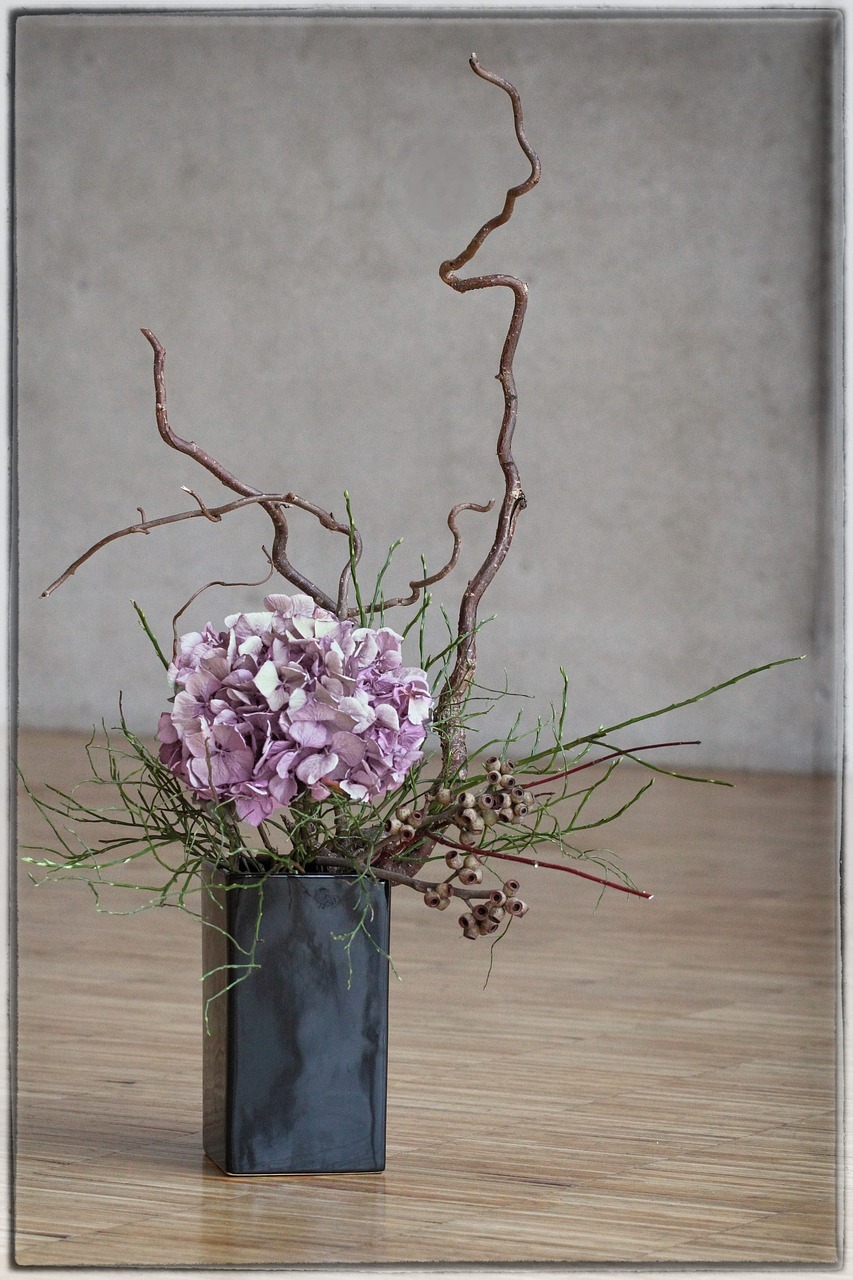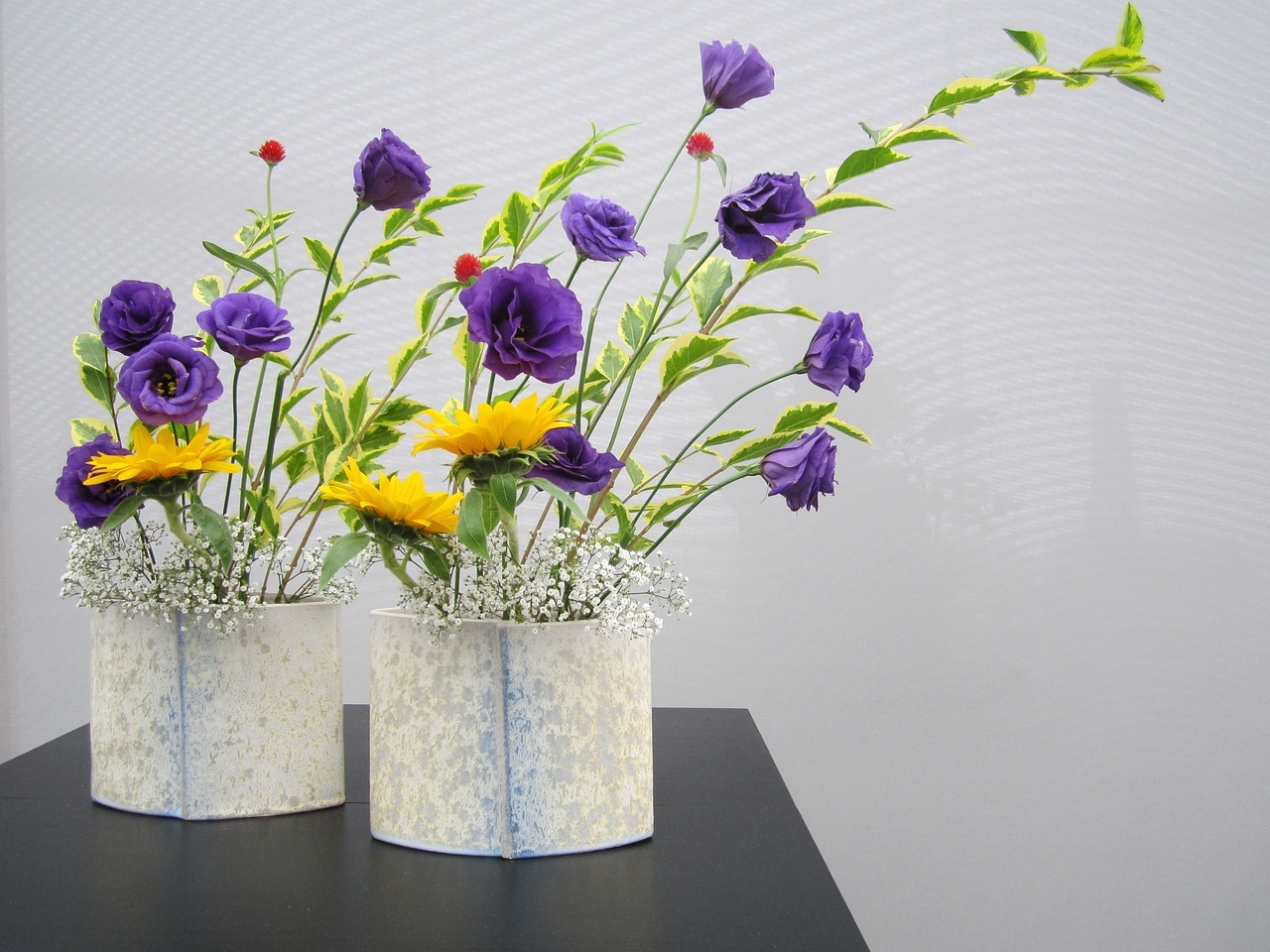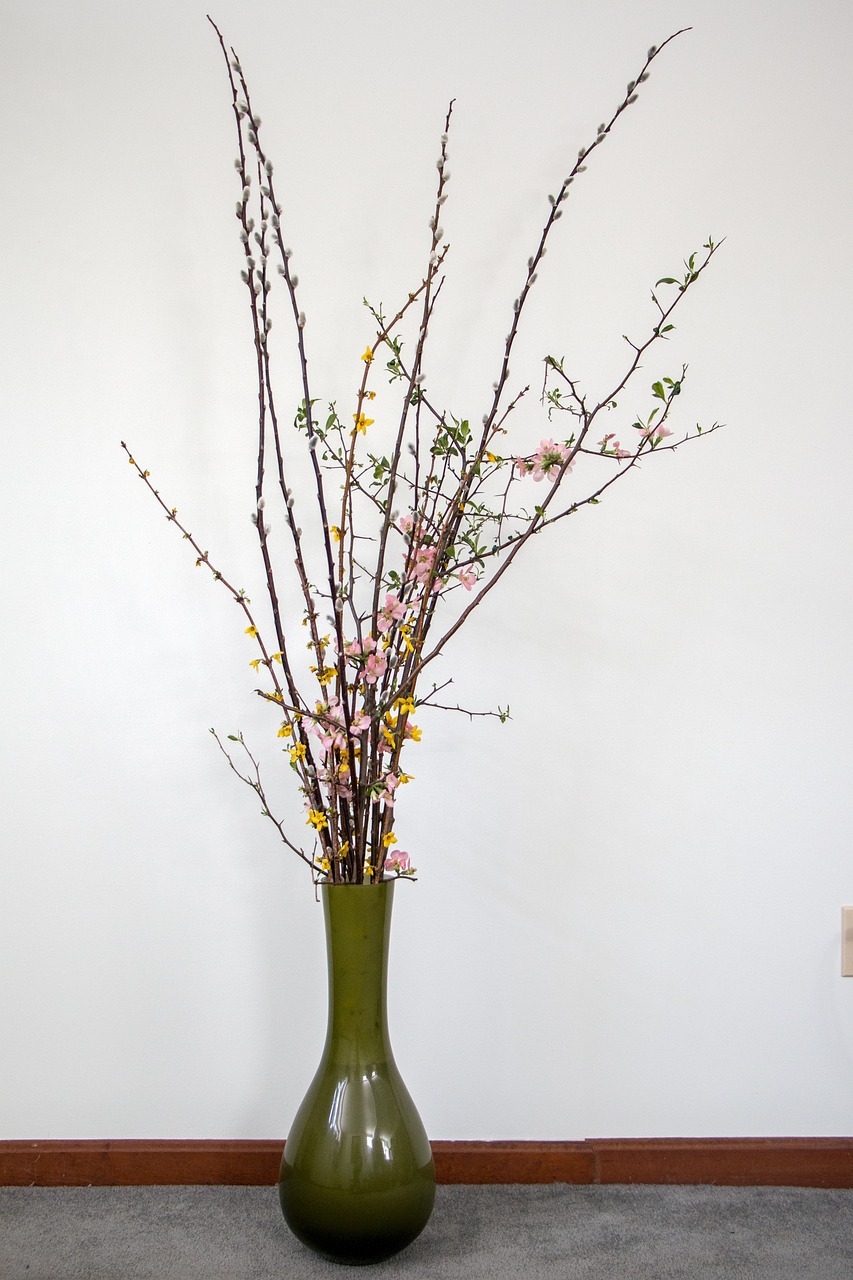Ikebana, the Japanese art of flower arrangement, stands as a captivating intersection between nature, art, and spirituality. Originating over 600 years ago, it transcends the mere placement of flowers in a vase. This practice is deeply embedded in Japanese culture, offering a reflective journey into the beauty of simplicity and the subtle interplay between humanity and nature. Unlike typical flower arrangements that prioritize color and fullness, Ikebana values the structure, form, and space between branches and blooms, creating harmony among seemingly disparate elements.
At its core, Ikebana is more than an aesthetic endeavor; it’s a philosophical journey that invites practitioners to find balance and mindfulness in their interaction with the natural world. This post aims to explore how Ikebana goes far beyond simple flower arrangement, embodying a deeper spiritual and philosophical significance that has captivated hearts and minds across the globe.
Historical Origins of Ikebana
Ikebana, often translated as “living flowers,” has its roots deeply embedded in the spiritual soil of Japan, blossoming from the rituals of offering flowers to spirits and deities in Buddhism. Introduced to Japan in the 6th century along with Buddhism from China and Korea, it evolved from the simple act of placing flowers on altars to a sophisticated art form. The first formal school of Ikebana, Ikenobo, emerged in the 15th century, marking the transition from religious offerings to a codified artistic practice. This period set the foundation for Ikebana, emphasizing not just the beauty of the arrangement but also the spiritual process of understanding life through the medium of flowers.
Evolution of Ikebana Styles
Over centuries, Ikebana has flourished into numerous styles and schools, each with its unique philosophy and aesthetic principles. From the classic rikka and shōka styles of the Ikenobo school, which reflect the beauty of nature in a more formalized manner, to the more free-form moribana and nageire styles introduced in the 19th century, Ikebana has continuously evolved. The Ohara and Sogetsu schools, founded in the 20th century, further revolutionized Ikebana by incorporating modern and abstract elements, making the art form accessible and relevant to contemporary life. This diversification reflects Ikebana’s adaptability and its enduring appeal across different periods and social changes.
Ikebana and Western Flower Arrangement Traditions
While both Eastern and Western flower arrangement traditions seek to create beauty through the combination of flowers and foliage, the philosophies and techniques diverge significantly. Western arrangements often emphasize abundance, color, and symmetry, focusing on creating visually pleasing bouquets that fill space and attract the eye. In contrast, Ikebana values asymmetry, space, and minimalism, with each element carefully chosen and placed to convey a deeper meaning or emotion.
This contrast highlights Ikebana’s unique approach to understanding and representing nature, where less is more, and the space between elements is just as important as the elements themselves. Through its historical evolution and distinct contrast with Western traditions, Ikebana has established itself as a profound and introspective art form that transcends mere decoration, inviting both practitioners and observers to a deeper engagement with the natural world.
Philosophical Principles of Ikebana
At the heart of Ikebana lies a deep-rooted philosophy that goes beyond the simple act of arranging flowers, focusing instead on the principles of minimalism, harmony, and respect for nature. This art form teaches us to see beauty in all forms of life and to create connections between the heavens, earth, and humanity. Minimalism in Ikebana is not merely an aesthetic choice but a reflection of the belief that true beauty is achieved not by adding more, but by subtracting, focusing on the essence of each element used. Harmony is sought through the careful balance and proportion of materials, colors, and shapes, representing the harmonious relationship between humans and nature. Respect for nature is a fundamental ethos of Ikebana, where each branch, leaf, and flower is treated with reverence, reflecting a broader respect for the environment and the cycle of life.
Wabi-Sabi and Ma in Ikebana
Ikebana is a tangible expression of the Japanese aesthetic concepts of Wabi-sabi and Ma, integrating these philosophies into its practice and presentation. Wabi-sabi, the appreciation of beauty in imperfection and transience, is central to Ikebana. This concept encourages practitioners to find elegance and serenity in asymmetrical arrangements, seasonal changes, and even the decay of materials, reminding us of the fleeting nature of life.
Ma, or the thoughtful use of space, is equally critical in Ikebana. Unlike Western traditions that often seek to fill space, Ikebana places significant emphasis on the empty space between branches and flowers. This space is not seen as void but as a vital element that holds the arrangement together, allowing each component to breathe and conveying a sense of tranquility and openness.
These philosophical foundations of Ikebana offer more than just technical guidance; they provide a lens through which practitioners can explore their relationship with the natural world, themselves, and the broader universe. Through its adherence to minimalism, harmony, and respect for nature, and its reflection of Wabi-sabi and Ma, Ikebana transcends mere floral decoration, embodying a profound spiritual and philosophical journey.
Ikebana as a Spiritual Practice
Ikebana’s essence is deeply intertwined with spiritual rituals and Zen Buddhism, offering a meditative practice that extends beyond the physical act of arranging flowers. Originating from the Buddhist tradition of offering flowers to symbolize the impermanence of life, Ikebana has evolved into a disciplined art form that embodies the Zen concepts of mindfulness and simplicity. This spiritual practice encourages individuals to engage fully in the moment, focusing on the arrangement of flowers with intention and awareness. Through this mindful engagement, practitioners can experience a form of moving meditation, leading to a state of inner peace and heightened awareness.
The practice of Ikebana as a form of spiritual discipline emphasizes the process over the final product. It invites individuals to observe the natural beauty of each element, understand the seasonal changes, and appreciate the imperfections that contribute to the overall harmony of the arrangement. This deep connection with nature fosters a sense of gratitude and reverence for life in all its forms, echoing the Zen pursuit of enlightenment through direct, intuitive insight into the nature of existence.
Moreover, Ikebana promotes the cultivation of patience, discipline, and a keen eye for detail, qualities that extend beyond the Ikebana mat and into daily life. As practitioners arrange flowers with deliberate care, they learn to apply the same mindfulness and appreciation to their interactions with people and the world around them. In this way, Ikebana serves as a bridge to a deeper understanding of oneself and the interconnectedness of all things, making it a profound spiritual practice that nurtures the soul and harmonizes the spirit with the rhythms of nature.
Artistic Aspects of Ikebana
Ikebana is not merely an act of placing flowers in a container; it is a disciplined art form that demands a high degree of creativity, precision, and skill from its practitioners. This intricate practice combines the artistic with the spiritual, challenging individuals to express themselves within the constraints of its traditional rules and techniques. The creation of an Ikebana arrangement is akin to painting a picture or composing a poem, where each element is carefully selected and placed to convey a message or emotion. The practitioner must consider the balance, harmony, and contrast of the composition, making deliberate choices that reflect both personal expression and adherence to Ikebana principles.
The role of color, form, line, and space is paramount in Ikebana compositions. Color is used to evoke emotions and set the tone of the arrangement, often reflecting the seasons or a particular theme. Form and line are critical in creating movement and flow within the arrangement, guiding the viewer’s eye and evoking a sense of natural beauty. Space, or the intentional absence of materials, is equally important, offering breathing room within the composition and emphasizing the beauty of the elements present.
Seasonal and symbolic elements hold significant importance in Ikebana, infusing the arrangements with deeper meaning and connecting the art form to the natural world. Seasonal flowers and branches are selected not only for their aesthetic appeal but also to reflect the transient beauty of nature and the passage of time. Symbolic elements, such as the use of certain flowers or colors, can convey messages of joy, sorrow, or celebration, adding layers of meaning to the arrangement.
Ikebana’s Educational and Therapeutic Benefits
Ikebana serves as a powerful educational tool, offering lessons far beyond the mere arrangement of flowers. It fosters aesthetic appreciation, inviting students to explore the principles of beauty, balance, and harmony in art. Through its practice, learners are encouraged to develop a keen eye for detail and a deep appreciation for the subtle beauty in nature. This heightened aesthetic awareness can enrich one’s perception of the world and enhance creative thinking and problem-solving skills.
On a therapeutic level, Ikebana offers profound benefits for mental and emotional well-being. The focused, meditative practice of arranging flowers can be a form of stress relief, reducing anxiety and promoting a sense of calm. The creative process involved in Ikebana allows for emotional expression and can be particularly therapeutic, helping individuals process feelings and achieve a state of mindfulness. The act of creating beauty from nature can enhance feelings of joy, satisfaction, and accomplishment, contributing to overall well-being and a positive outlook on life.
Conclusion
Ikebana is not merely about creating aesthetically pleasing arrangements; it is an art form that embodies deep philosophical values, emphasizing minimalism, harmony, and the intrinsic beauty of nature. The practice of Ikebana offers a unique blend of artistic expression and spiritual discipline, encouraging mindfulness, inner peace, and a deeper connection with the natural world. Its educational and therapeutic benefits further highlight Ikebana’s significance beyond the art world, promoting cultural understanding, environmental sensitivity, and personal well-being.
Ikebana is an art that turns flower arranging into a deep expression of balance and harmony, similar to how Kintsugi embraces imperfections. What Is Kintsugi and How Does It Celebrate the Beauty of Imperfection? explores this unique practice of repairing pottery with gold, highlighting the beauty in life’s imperfections, a concept shared with the principles of Ikebana.




